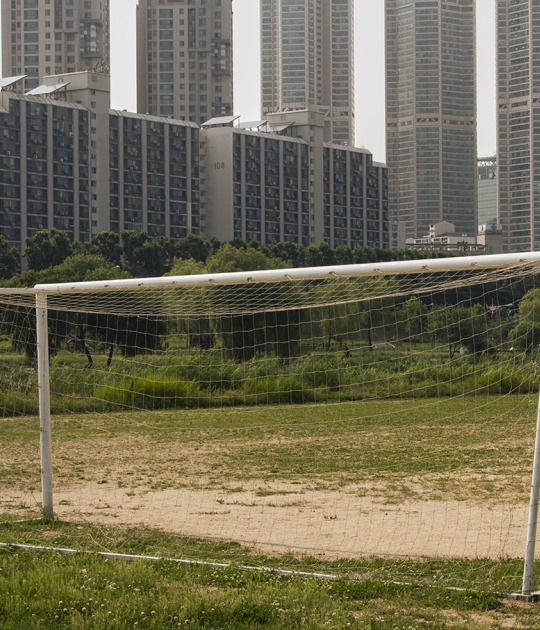It was a much more closed world than the present one, only a few chosen ones could relate to the mainstream media at the time. I've told it many times, we also emerged ourselves at that time of necessary change in which the ways of telling architecture needed to change and refresh the spreading of architecture.
Miguel de Guzmán was one of those photographers who started their work in a time of change, combining analogue and digital instruments, a combination in which the "purists" of the moment (all periods and human activities have their own purists), anchored in the virtuoso skill of the art, resisted to introduce changes. Technological possibilities actually accelerated the possibility of shooting and this resulted in the possibility of showing architecture differently. The time spent on framing, light, composition... changed. Taking a picture turned from being an extremely expensive act, often determined by the expensive material used, to focus on the process of what is being photographed.
The possibility of taking almost endless shoots opened a new spectrum of possibilities. The silent dialogue between the photographer and what he sees is democratized, it becomes a space of mutual interaction, where the photographer can create architectural narratives. The quality standards needed to photograph architecture are more easily achieved and this allows the dedication of more time to the generation of new forms of expression.
Without any doubt, what defines Miguel de Guzmán's photography are not his technical skills (which he widely has) or the new use of technological pieces (deftly inserted in his work), what distinguishes his work is the ability to tell stories that make us perceive space, architecture and landscape in a radically different way. His still or moving images (one of the unique aspects of his work), allow us to see the architect's work and also allow us to imagine or see new realities sometimes not even dreamed of by the architect.
The best thing about these visions is that Guzmán becomes part of the architect's discourse, in contrast to other photographers who take advantage of commissions experiment and develop other aspects in their way of expressing themselves through images. Miguel de Guzmán dreams of new stories and this is largely what his customers are looking for, the account of architecture with people. I believe this ontological aspect of creating a place is fundamental.
His images turn into memory because they let the viewers get involved in the visions and see architecture spaces as places, spaces where individuals interact with other individuals or with the space itself. He manages to introduce time, movement and memory in the images he offers us. He makes us think of something which I've said many times, that the places are more important than the spaces.
His images, moving or still, are the base of his work, a work that not only turns reality into an image but goes much further. They don't show us a debate but encourage us to reflect on how to look, use, think, and build architecture. It is in this sense a different time to think and tell architecture.
Text by.- José Juan Barba. Dr. Arquitecto.































